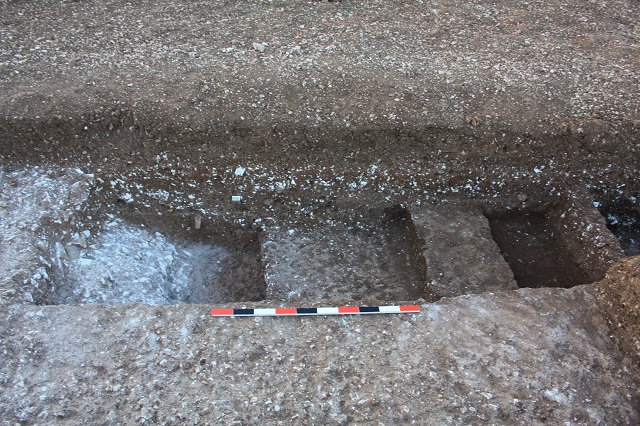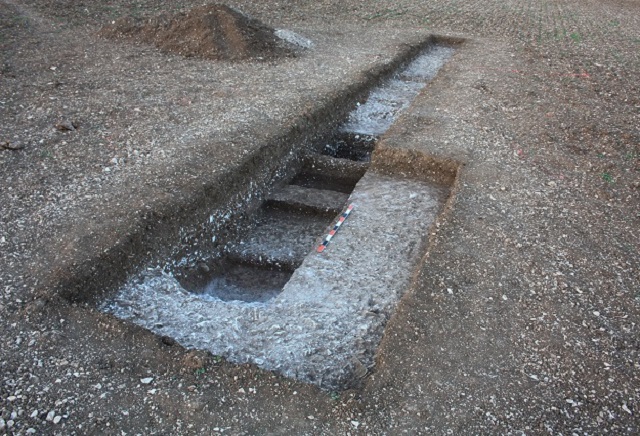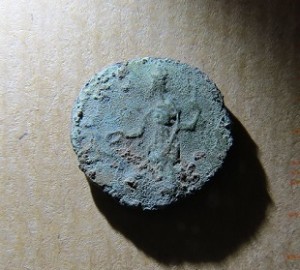Update on the excavation of the ‘major anomaly’ … One of our main aims on the excavation this year at the Binbrook site is to examine the large “anomaly” feature that showed on the geophysical survey of last summer. So one of our tasks has been to open an excavation trench across the feature to see what has given this reading on the survey. The survey (using a magnetometer) showed a very dark circular reading which stands out on the extensive plot of the ancient site. It lies close to the ditches of the Roman enclosure/road, so we thought even before we started that it could relate to our Roman period site. Our geophys expert, Lloyd, said it was not caused by iron but probably some type of residue of burning. Using a GPS instrument Lloyd located the site of the anomaly in the field at the start of last week before we had begun any excavations. He marked it with a pink spray on the surface of the ploughsoil (see photo). This spot is in the middle of the field, where there was no surface indication of anything in particular. Steve said it was a good example of how new technology has made a huge positive impact in archaeological fieldwork. Lloyd had located the spot even before we had assembled our digging tools that morning. In just a few hours of digging-off the topsoil, before lunch, we could see that we were in the right place. Impressively Lloyd then predicted that if we extended the trench a metre we would be over a ‘linear feature’ that gave a faint but clear reading on his survey. This proved to be Ashwini’s gully feature with the oyster shells.
So what progress have we made with understanding the “anomaly”? David, Neville, Graham and Alan have been excavating the feature all week. They have carefully removed tens of buckets of soil. After a couple of days it was clear his feature was indeed big. It is like a big pit. It is not a kiln or oven as we had thought it could be before we started. The slag we found when cleaning over the top of the feature has not been found lower down. We are nearly a metre down into the feature now and it is filled with dark soils with Roman finds. There are not great quantities of finds (perhaps there will be at the bottom?), but the finds are in good condition: large oyster shells again, big pieces of Roman pottery and Roman roof and hypocaust tiles. On the west side the edge is sloping in a little and on the east side in particular the soil is very dark and we think that means it has a sooty content; that may account for the reading. With more digging over the coming days we will doubtless learn more. Is this a well, cut into natural chalk, to supply water for small scale industrial processes and/or watering animals at this top end of the site, a long way up the slope from the stream below?
We have now found a few coins. They are all Roman and whilst their discovery is always exciting and they give us ‘dates’ and show the emperors and goddesses of the Roman world they are the ‘small everyday change of the empire’. We feature here one of these coins found by Stan. This has been identified by our coin expert David Holman as a low value issue of Victorinus (269-271). To quote David “the portrait is unmistakable” while the reverse shows “Salus feeding serpent rising from altar”. You can see here the emperor has a luxuriant beard – which would be fashionable today! He had a successful military career before becoming emperor of the breakaway ‘Gallic Empire’ of the time. He came to an untimely end.
The Dig Team





